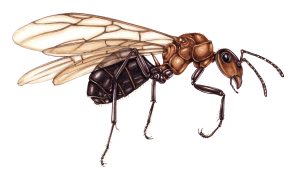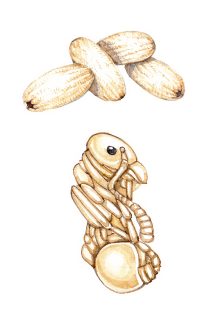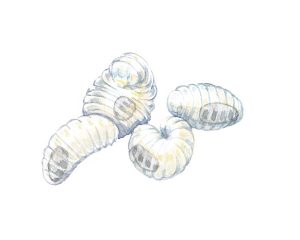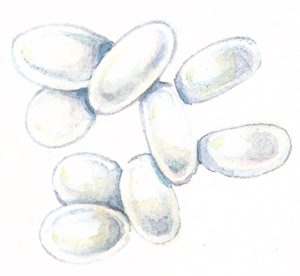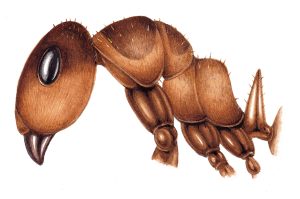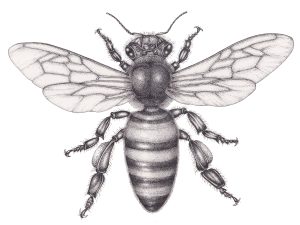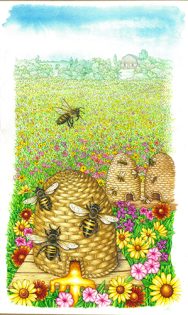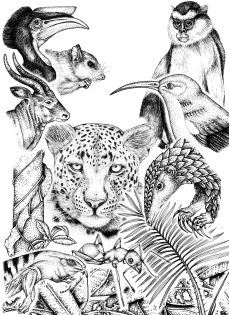
Queen ant Formica aquilonia Scottish wood ant
Queen ant F. aquilonia Scottish wood ant with wings. Newly emerged queens have wings, and following their mating and nuptial flight, they bite these off. This enables them to burrow underground and set up a new ant nest and colony, and to begin laying eggs and raising young.

Pupae and cocoon of wood ant and unsheathed pupae
Pupae of a wood ant, both within its cocoon, and extracted. Detail from a life cycle ant illustration by Lizzie Harper natural history and sciart illustrator

Larvae of wood ant
Larvae of wood ant showing their translucent bodies and segmentation.

Eggs of wood ant
Illustration of several eggs of a wood ant.

Scottish wood ant thoracic view
Detail of the thorax of the Scottish wood ant Formica aquilonia. The illustration shows distribution of hairs up to the eyes. This species is often confused with the Hairy wood ant which has longer hairs.

Honey bee worker Apis mellifera
Honey bee worker Apis mellifera illustration from A Life on Our Planet by David Attenborough

Pollinators bee ant hoverfly on Japanese knotweed Fallopia japonica
Pollinators bee ant hoverfly on Japanese knotweed Fallopia japonica

Bee hives flower meadow and honey bees
Landscape of a field of flowers with beehives and honey bee workers

African Tropical Forest species mix
Illustration incorporating lots of animals found in the African tropical rainforests of Ghana including monkey, hornbill, sunbird, bongo, jaguar, sunsquirrel, driver ant, pangolin, and moniter lizard











